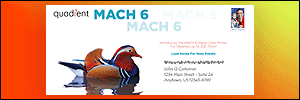I think there is a common misconception among many pressman, that in zones with no ink coverage, or in zones outside of the paper perimeter. ink keys should be shut down to zero ink feed. This thinking is wrong. You need to always feed a little bit of ink. The amount to be determined by the particulars of your press, and the form. If your a pressman that shuts down the fountain completely, outside of the paper perimeter, then I submit that there is migration of ink on other units as well. The yellow run down last will tend to show it the worst because its the lightest color, and most affected by the slightest bit of contamination. The only color that will not become contaminated in such an instance would be the first down ink.
If AFTER trying my suggestion to allow some ink flow into the zero coverage areas, your still faced with contamination, then I would say that D ink man is correct. Your probably either dealing with a yellow ink that is too strongly pigmented, or..... a yellow ink that is too tacky, which often winds up being one and the same, because as an ink film gets thinner, its tack properties increase. In this case D ink man would also be correct ,in saying to add some transparent white to the yellow ink as a test to see if the problem is resolved. I would also agree with him in saying ,that about 20 percent transparent white would be the proper amount. One you've established that this in fact is the problem, then my suggestion would be either turn to your ink supplier for a long term solution as you don't want to have to be altering your inks with every fountain fill.
D ink man is also correct in saying that tech service in many ink companies is very lacking at best. If your fortunate enough to be working with a supplier, that actually knows enough about their product to solve these formulation issues, then I would say that they are worth paying a little more for. One of the problems I see over and over in our industry, is that price is the deciding factor in all buying decisions, to include the hiring of qualified personnel. Any pressman with skills that exceed the level of button pushing should know, or at least be able to figure out what I've just outlined. Unfortunately that is not the case these days because in a companies quest to save money, the tendency has been to do away with formal apprenticeships, and promote press crews right off the broom.
The hiring trend these days to man these software driven presses, seems to be that its easier to train a computer guy to print, than it is to train an already skilled craft driven mentality guy on the software. Imagine the possibilities, hiring managers if you could have both??? Problem is that having a guy capable of both would wind up costing you money over time, as anyone with the sense to do both, would also have the sense to know his or her worth!!!











